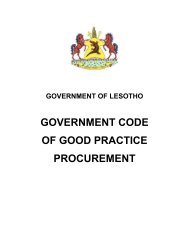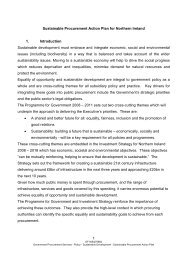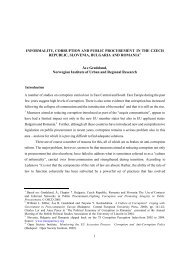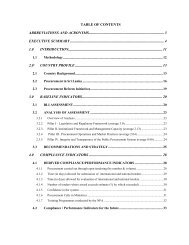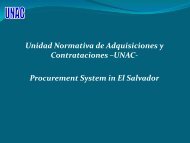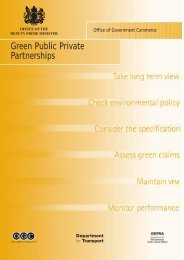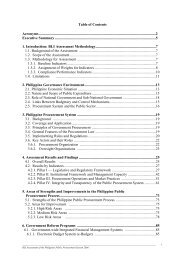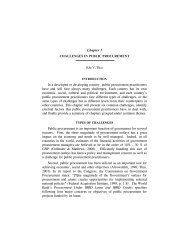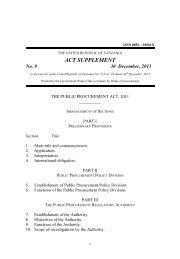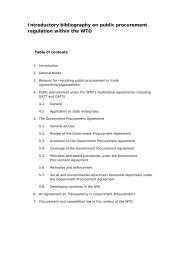Compendium of Country Examples and Lessons Learned from ...
Compendium of Country Examples and Lessons Learned from ...
Compendium of Country Examples and Lessons Learned from ...
You also want an ePaper? Increase the reach of your titles
YUMPU automatically turns print PDFs into web optimized ePapers that Google loves.
The Process <strong>of</strong> Preparing <strong>and</strong> Planning a Procurement AssessmentIn 2007, the JV on Procurement pilot countries started to prepare the assessment <strong>of</strong> their nationalprocurement system on the basis <strong>of</strong> the Methodology for Assessment <strong>of</strong> National ProcurementSystems. In sharing experiences, many pilot countries refer to “roadmaps” or “action plans” whichwere developed to allow for a smooth workflow in implementing the assessment. Different approacheswere chosen reflecting the specific country situation <strong>and</strong> resulting in different actions when planningthe assessment. The key questions discussed at the planning stage can be summarised as follows:Status <strong>of</strong> the assessment: Self-assessment, joint donor/partner country assessment, externalassessment?Context <strong>of</strong> the assessment: St<strong>and</strong>-alone assessment using the Methodology, assessment inthe context <strong>of</strong> a CPAR/CPAR update, combined PEFA/Procurement assessment, follow-upassessment?Scope <strong>of</strong> the assessment: BLIs <strong>and</strong> CPIs? National level/agency level? Degree <strong>of</strong>decentralisation?Level <strong>of</strong> information available: Availability <strong>of</strong> national procurement statistics, quality <strong>of</strong>procurement records?Availability <strong>of</strong> expertise to conduct assessment: Assistance <strong>of</strong> a consultant experienced inthe use <strong>of</strong> the Methodology needed?Budget/Timing: costs involved? Funding? Sponsoring by donors? Time schedule?The text that follows is structured along the following lines:The section under Strategic issues discusses experiences in ensuring credibility <strong>and</strong> trust in theassessment results: local ownership, donor participation, <strong>and</strong> stakeholder involvement. Planning thework reflects more practical issues relative to planning the assessment process.I. Strategic issuesLocal ownership <strong>and</strong> donor participationBackground informationAid is more effective when partner countries exercise strong <strong>and</strong> effective leadership over theirdevelopment policies <strong>and</strong> strategies. This is why ownership is the fundamental tenet underpinning theParis Declaration. In particular, country ownership is key to procurement capacity development, thecore objective <strong>of</strong> the Methodology. The Methodology provides input into designing capacitydevelopment initiatives <strong>and</strong> serves as a baseline against which progress can be measured. A country‟scommitment to strengthen the national procurement systems includes a political willingness to change.COMPENDIUM OF COUNTRY EXAMPLES AND LESSONS LEARNED […] - OECD 2008 13



